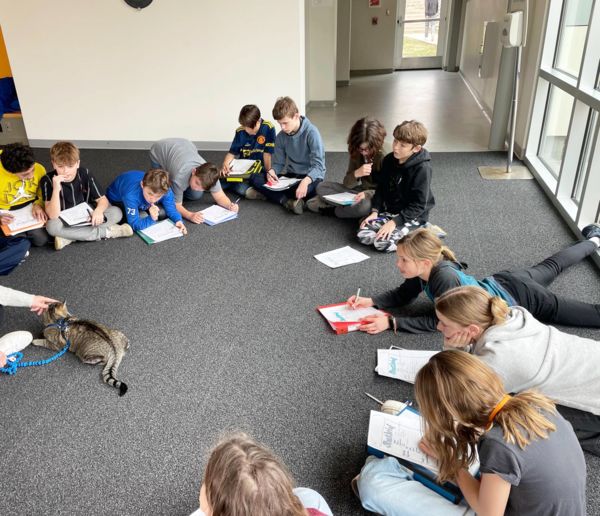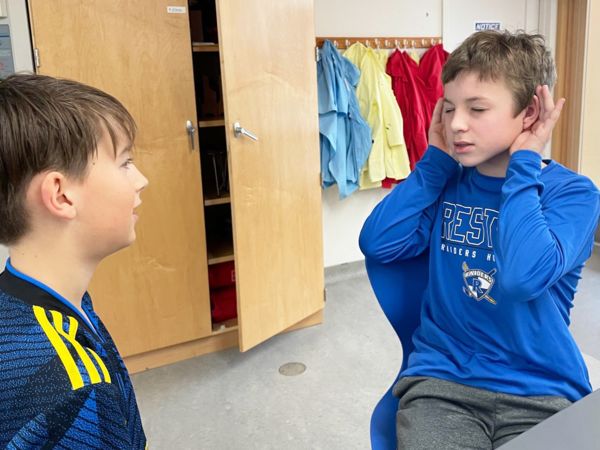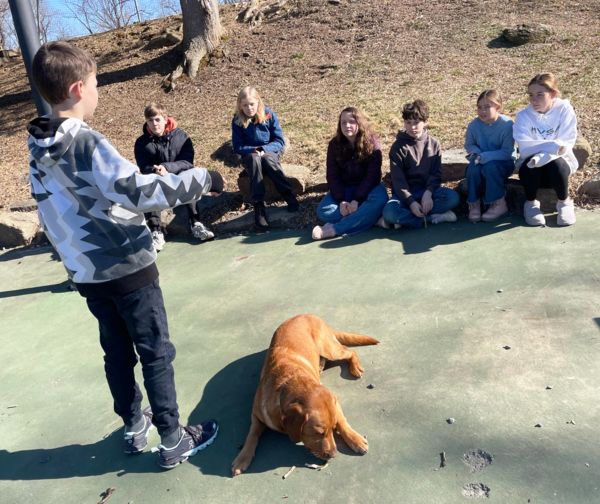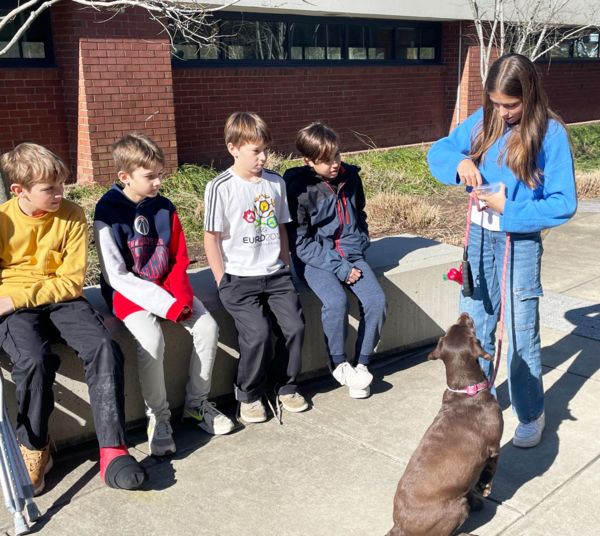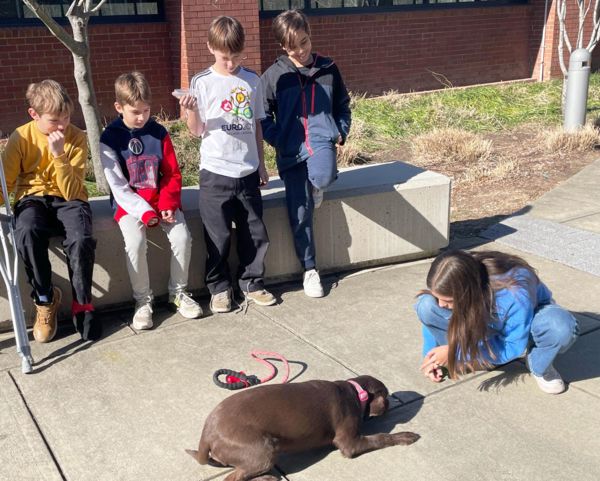MINT: Faster than a Dog? Pet Class in the 6th Grade

Pets have been a focus of the 6th graders science class recently. The students were particularly interested in cats and dogs, the oldest and most popular companions of humans. Questions such as “How much wolf is still in a dog? “and “Why can dogs run faster than humans?” and “How does a cat catch a mouse?” were considered by the students. At the end of February, they were given the opportunity to explore these questions firsthand. They observed dogs running, playing and doing tricks, and learned more about the senses of cats and their special paws. There was even a race…
Comments by our students:
Caspar S. (6b): In these special class three students brought their dogs to school. My favorite dog was Milo, a Labrador retriever from Canada. Felix P.. Milo’s handler, gave a very good presentation, so it was easy for the other students to fill out a worksheet and note our observations. Milo was able to perform several very useful tricks and also some funny ones. He comes to you, when you call him, he sits or lays down between your legs on command, he can find things in the house or garden when you give him the smell and he goes to bed on command.
I loved that class because we could listen and work, while having fun. I am looking forward to the next animal class.
Hannes S. (6b): On Monday, February 26, 2024, class 6b had a lesson about cats in the third and fourth period. We met a female cat called Tulip. She is a four-year-old Norwegian Forest Cat who is quite big for her age. She has big green eyes, pointed ears and long white whiskers. Her coat is white, brown and a little black spotted and very dense. We have observed that cats can extend and retract their claws. During the cat lesson, Tulip was very curious and active but also a bit shy and wanted to hide from us at first. The owner then told us that Tulip prefers to sleep and doesn't like it when lots of people want to stroke her.
Paula P. (6a): I thought this lesson was super cool. I learned a lot of new things about cats: their paws are smaller than those of dogs, they have 30 teeth and very good eye sight. They are very agile and well camouflaged. I also found it interesting that they can hear even better than dogs.
James P. (6a): Personally, I found the cat lesson quite exciting, funny but also interesting. For example, we learned a lot about Andreu's cat Simba. She grows special hair in her ears, which is important for her excellent sense of hearing. I didn't know that before the cat class. I thought it was great that we could come up with our own questions. All in all, I thought this cat lesson was really great.
Steffi Colopy
(6th grade science teacher)

